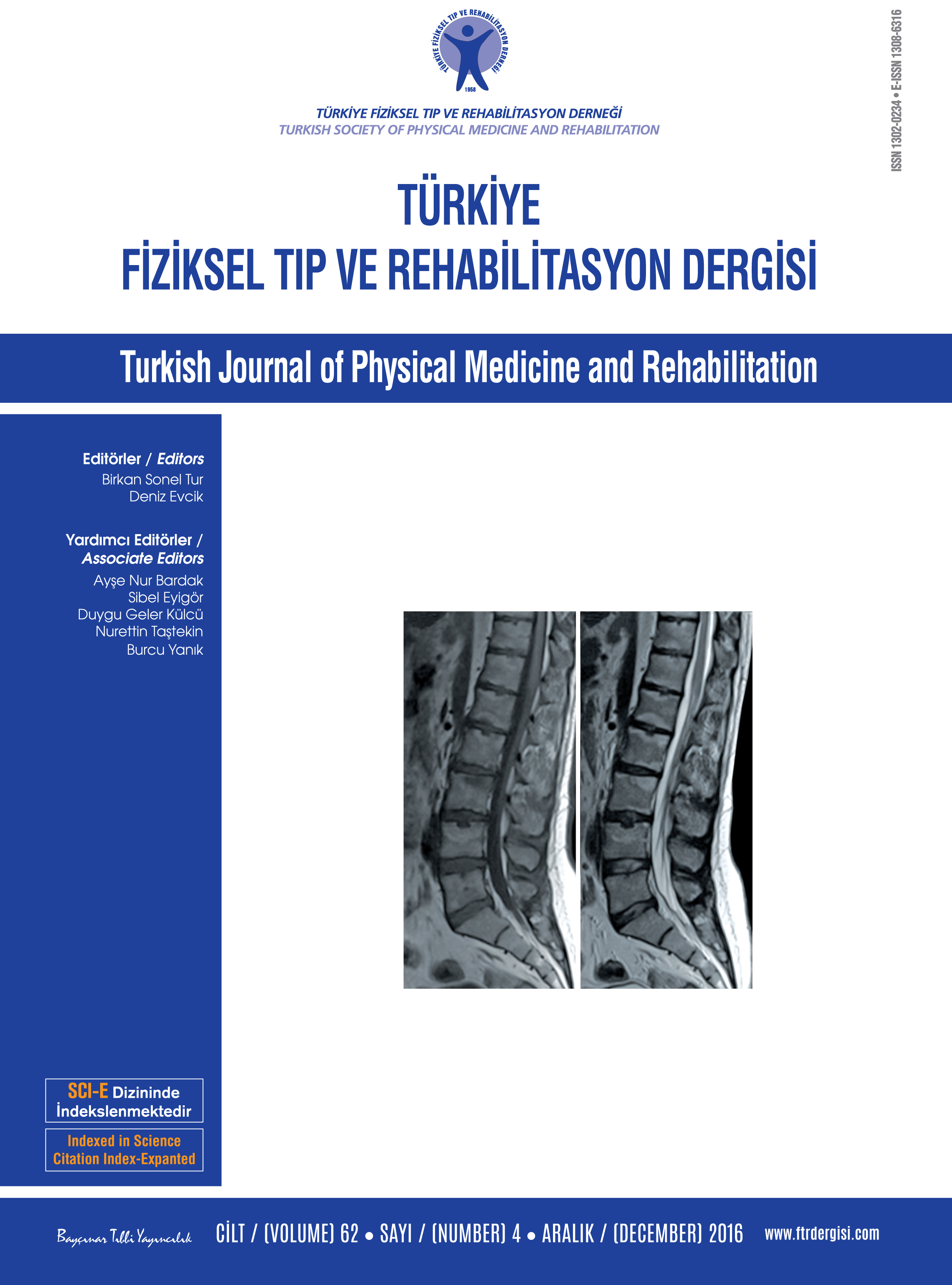Balance Performance and Fear of Falling in Older Patients with Diabetes Mellitus: A Comparison with Patients without Diabetes Mellitus
2 Department of Endocrinology and Metabolism, Ondokuz Mayıs University Faculty of Medicine, Samsun, Turkey DOI : 10.5152/tftrd.2015.77861 Objectives: This study aims to evaluate balance performance and fear of falling (FOF) in older people with and without diabetes mellitus (DM) and the parameters affecting balance and FOF in older patients with DM.
Patients and methods: Between 2013 June - 2014 April, a total of 100 patients with DM (37 males, 63 females; mean age 66.8±4.3 years; range 60 to 83 years) and 101 non-diabetic elderly controls (35 males, 66 females; mean age 68.0±4.3 years; range 64 to 81 years) were enrolled in this study. Fear of falling (Falls Efficacy Scale-International (FES-I)), neuropathic pain [Leeds Assessment of Neuropathic Symptoms-Signs (LANSS)], mobility [Timed Up and Go test (TUG)], balance [Berg Balance Scale (BBS)], One-Legged Stance test (OLST), disability status [Modified Barthel Index (MBI)], depression [Beck Depression Inventory (BDI)] and anxiety [Beck Anxiety Inventory (BAI)] were assessed.
Results: Timed Up and Go test, BDI, BAI, and FES-I scores were significantly higher; BBS, OLST, and MBI scores were significantly lower in patients. There were significant effects of neuropathic pain, hypertension and cardiovascular disease on BBS and FES-I in diabetic patients. One-Legged Stance test, TUG, and FES-I were associated with BBS in diabetic patients. Falls Efficacy Scale-International was significantly correlated with HbA1c, MBI and BBS in patients.
Conclusion: Older people with DM have increased FOF and balance problems. Uncontrolled DM, cardiovascular problems and neuropathic pain have negative impact on balance and FOF. Physiatrist should also take part in the follow-up of older diabetic patients.
Keywords : Ageing; balance; diabetes mellitus; emotional status; fear of falling

















